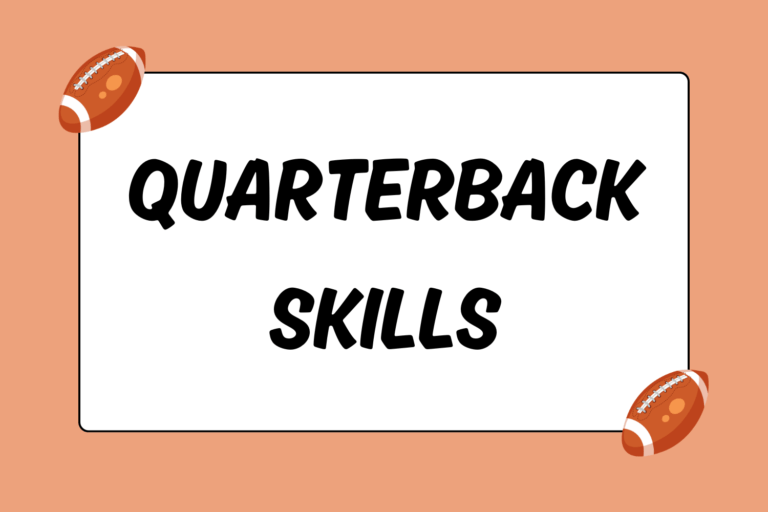Though some football teams opt for a pass-first offensive strategy, most teams opt to establish a run game in order to open up the passing game. Because the success of the run game is often vital to a team’s overall success on offense, it’s important to understand what it takes to develop a good ground game — especially if you’re a running back.
There are two different phases involved in getting the ball to the running back. The first phase deals with the running back’s first move after the play actually starts. The second phase focuses on the transfer of the ball from the quarterback to the running back. This guide explains some of the more fundamental points of both phases: Getting the ball and then securing it.
The First Move
Being successful at running with the ball starts before the ball is even snapped. A good running back knows to do the following before every play:
- Scan the defense for potential weak spots and/or blitz points
- Know who is blocking who, as well as the specific path that he will run
- Listen to the quarterback’s cadence, and adjust if an audible is called
The running back’s first move after the ball is snapped is automatically decided by the type of running play being executed:
- An inside run (such as a dive play) requires the running back to fire straight ahead and gain speed as quickly as possible before hitting the hole
- An outside run (such as a sweep) requires the running back get to the quarterback quickly, and then run full speed along the path of the play; this also provides just enough time for other offensive players to establish their blocks
- A pitch or toss allows the running back to immediately start running along the pre-set path, though the running back should wait until securing the ball to run at full speed
- A trap or counter requires the running back to start moving at 50- to 75-percent speed in the fake direction, then quickly head the opposite way at full speed
Speed and acceleration are of the utmost importance to have when running the ball. Depending on the situation, however, a play may require the running back to briefly delay his acceleration so that the other players can establish themselves in making the running back’s job as easy as possible.
Transferring Possession
Regardless of the first move, the most crucial element of any running play is the actual transfer of the ball.

There are two basic ways to transfer the ball to the running back on a running play: The handoff and the pitch (or toss).
The Handoff
Handoffs are most commonly used for inside run plays like dives and counters. Because of the small distance between the running back and his targeted hole at the line of scrimmage, it’s crucial that the quarterback transfers the ball as quickly as possible.
Here’s a breakdown of the different steps in executing a handoff:
- The ball is snapped. The quarterback and running back immediately move toward each other.
- Depending on which way the running back is headed, the quarterback will shift slightly so he is moving away from the direction of the play; otherwise, the quarterback would be in the way of where the running back is supposed to run.
- The running back approaches the quarterback with the arm closest to the quarterback raised to shoulder height and bent at the elbow, so the hand is close to the chest. The other arm stays at the midsection, bent at the elbow with the palm facing up.
- The quarterback puts the middle of the ball against the running back’s stomach, with the points of the ball parallel to the ground. The running back immediately closes his arms over the ball, securing it against the body.
The actual transfer of possession may involve different or additional steps, depending on the play being run, but these steps illustrate the most common type of handoff process.
The Pitch
The pitch (or toss) is mostly used for outside running plays, such as sweeps. Just as it sounds, the pitch involves transferring the ball from the quarterback to the running back by throwing it a short distance, usually three to five yards. Because outside running plays require the running back to cover more distance, the pitch is used to get the ball to the running back without requiring him to move away from the intended path of the play.
After the transfer of possession takes place, it’s all up to the running back to both advance and keep the ball. This marks the transition from Phase 1 (receiving the ball) to Phase 2 (securing possession).
Smart Running
Making the first move and getting the ball are only the tip of the iceberg when it comes to running the ball. Here are several habits every running back should employ that will make it much easier to be successful when running the ball:
Protect the Ball
Ball security is arguably the running back’s top priority; it doesn’t matter how fast someone can run if they can’t hold on to the ball.
A common expression used when talking about ball security refers to the “four points of protection.” This should be followed whenever carrying the ball, regardless of what position the ball carrier plays.
The “four points of protection” refers to the four spots that the ball touches the running back’s body:
- One length of the ball runs along the forearm
- The other length is held tightly against the body
- One of the ball’s points is tucked into the bend of the elbow
- The other point is in the palm of the hand, with the fingers wrapped around that end.

Let the Play Develop
Every running play a team uses is designed around the specific path the running back is supposed to take. Every other player on the offense has a job to do, and each job is assigned with the running back’s route in mind. Successfully doing these jobs will make it much easier for the running back to gain positive yards.
That being said, the running back has a very brief window of time to hit the hole. Allowing the other offensive players to do their jobs doesn’t mean standing around and waiting until one of them says “go.” It means knowing what to look for ahead of time so that the running back hits the hole at exactly the right moment.
Form Follows Function
Along with protecting the ball and running smartly, the running back should also understand that how they run has a big impact on how well they run. Following these tips will go a long way to being consistently successful when running the ball:
- Stay low: A lower center of gravity provides better balance, and makes it harder for defenders to tackle the running back.
- Keep the legs and feet moving: The moment both feet stop moving is the moment that all the running back’s momentum is gone.
- Eyes up: By constantly scanning the field, the running back can make smart choices about where to run, as well as how far he may have to go to gain a first down or touchdown.
Basically, the secret to good running form is to stay low and keep moving. Most good running backs do this by sheer instinct.
Run Well and Win
A strong running game is crucial to the offensive success of any team. Running the ball is the safest way to gain yards and score points. And the more successful a team is with its running game, the more success it will have in the passing game, as well.





